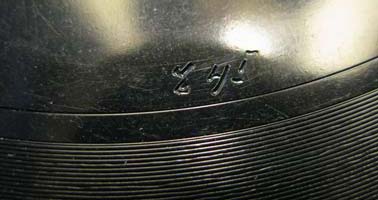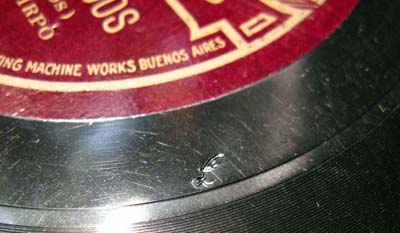By
The electric recordings and a marketing trick

n the early 20s the technical rudiments of what would later be a breathtaking improvement in the recording methods began to be developed in the United States. I’m talking about the electric recordings which were known by that name because they used microphones and amplifiers to process and record sound.
 In the mid- 1925 the system was ready for its exploitation, but a non technical but commercial problem arose: What would they do with the immense world stock of discs recorded by the still current acoustic system of a quite inferior sound quality? It was quite likely that after the overwhelming auditory difference the public would choose the new proceeding rejecting then the acoustic ones.
In the mid- 1925 the system was ready for its exploitation, but a non technical but commercial problem arose: What would they do with the immense world stock of discs recorded by the still current acoustic system of a quite inferior sound quality? It was quite likely that after the overwhelming auditory difference the public would choose the new proceeding rejecting then the acoustic ones.
This pressing and very expensive dilemma was solved through a masterful trick that meant doing exactly the contrary to what was expectable after the commercial launching of the electric discs. Which was? Cleverly hiding the extraordinary novelty, without advertising it at all. To assure this «silence», agreed by all the companies so that everything would be unnoticed, the disc labels were kept unaltered.
A similar stance was adopted in our milieu in 1926 when the electric recordings were released by Victor, first, and later by Odeon. In the former label the discs generated by the new system «confessed» the novelty only by an oval with the inscription V. E. (Victor electric) on the not recorded area where the groove ended.
 Odeon gave more clues but were unnoticed by most of the buyers. And we shall see that they were also unnoticed by the specialists. Only by the mid- 1927 a timid inscription saying «electric recording» was added to the traditional disc label of the acoustic records with the «slim» Odeon logo. By the late 1927 and early 1928 the disc label was indeed changed. It was clearly explained that since then the recordings were made with the «Veroton System». Something similar happened with Victor.
Odeon gave more clues but were unnoticed by most of the buyers. And we shall see that they were also unnoticed by the specialists. Only by the mid- 1927 a timid inscription saying «electric recording» was added to the traditional disc label of the acoustic records with the «slim» Odeon logo. By the late 1927 and early 1928 the disc label was indeed changed. It was clearly explained that since then the recordings were made with the «Veroton System». Something similar happened with Victor.
Incredibly, this commercial-advertising scheme would bear fruits nearly sixty years later. On one occasion I was checking the material of another record collector to write down the data appearing on the discs and so I would further my research of discographies. To my surprise, while I was checking an Odeon disc of the early 1927, the following dialogue started:
—Have you noticed, skinny (by that time I was slim), the good sound of these latter acoustic discs?
—But this one is an electric one!, I told him.
—But it can’t be an electric one, the disc label does not say it. Was his answer.
 After that I made him notice all the evidence of the record which traced its electric origin. Those were things he had never paid attention to. They were: a) a groove exit (the acoustic discs of this label did not have it); b) a logo of the technical system used, similar to the symbol of the English pound, printed on the wax surface; c) the numbers of masters (matrices) beginning again from one; d) the prefix e to indicate they were electric ones. His reaction was: «Hey, so many years collecting records and now I come to know this!».
After that I made him notice all the evidence of the record which traced its electric origin. Those were things he had never paid attention to. They were: a) a groove exit (the acoustic discs of this label did not have it); b) a logo of the technical system used, similar to the symbol of the English pound, printed on the wax surface; c) the numbers of masters (matrices) beginning again from one; d) the prefix e to indicate they were electric ones. His reaction was: «Hey, so many years collecting records and now I come to know this!».
The conclusion is that to get all the information contained in discs, not only must they be stored in large numbers and listened attentively but also you have to learn how to read them. I would say more: you have to know how to think of them.